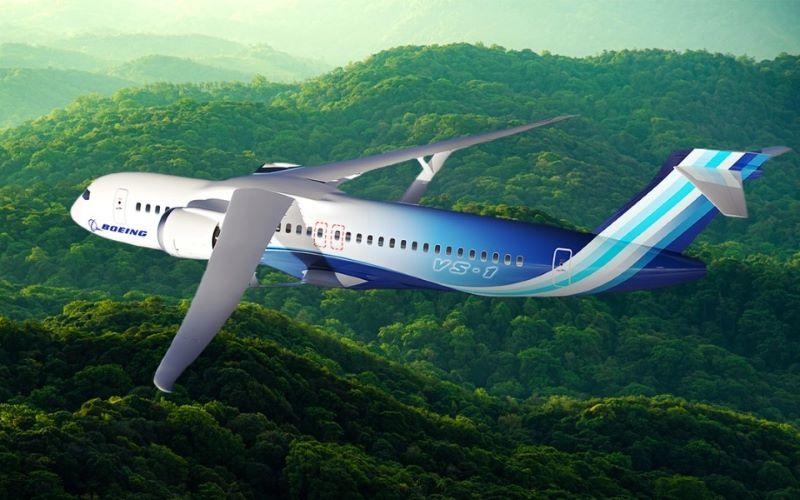
Sustainable flight is at the heart of NASA’s request for $995.8 million in funding for aeronautics research in fiscal 2024, an increase of 6.5% over the 2023 enacted level.
Higher funding for the Sustainable Flight National Partnership program to develop airframe and engine technologies to reduce fuel burn by 25% for a mid-2030s single-aisle airliner is the main driver for the increase.
NASA is seeking increased funding for the Sustainable Flight Demonstrator (SFD), a Boeing-led project to build a full-scale demonstrator for the drag-reducing Transonic Truss-Braced Wing (TTBW) configuration. More funding is also sought for the High-Rate Composite Aircraft Manufacturing (HiCAM) and Hybrid Thermally Efficient Core (HyTECH) engine projects. SFD, HiCAM and HyTECH are all planned to enter the design/build phase in fiscal 2024.
The increase in funding needed for sustainable flight projects is expected to be offset partially by a reduction in spending on the Lockheed Martin X-59 QueSST low-boom flight demonstrator as it moves into flight testing. The X-59 is planned to fly in fiscal 2023 then complete envelope expansion and begin acoustic validation flight testing in fiscal 2024.
Another element of the overall Sustainable Flight National Partnership, the Electrified Powertrain Flight Demonstration project to flight test megawatt-scale hybrid-electric propulsion systems, is making progress, NASA says. General Electric has begun modifying its Saab 340 testbed and the critical design review for MagniX’s modified De Havilland Canada Dash 7 is planned for fiscal 2024. GE plans to fly in fiscal 2025 and MagniX in 2026, NASA says.
Under HyTECH, NASA in fiscal 2023 plans to complete development tests of aerodynamic improvements for small-core turbine engines and in 2024 to award Phase 2 contracts to demonstrate integrated core engines in simulated flight conditions in 2027. Under HiCAM, NASA in fiscal 2023 plans to select technologies for high-rate composites manufacturing and in 2024 initiate development of a large-scale structural panel leading to a full-scale capstone demonstration in 2026.
Also in 2024, NASA plans to complete development of small-core combustor designs that provide reliable ignition and lean blowout performance when using blends of sustainable aviation fuel (SAF) higher than 80%. The objective is to enable single-aisle aircraft to run on blends beyond today’s limit of 50% and up to 100% without compromising performance.
In support of the SFD project, NASA in fiscal 2023 plans to test how the thin-wing TTBW performs in deep stall, vibration and icing conditions. In 2024, the agency intends to develop a model-based systems analysis and engineering framework for conceptual design optimization. This is planned to be used to provide an integrated, system-level benefit assessment of the vision-vehicle concepts developed under the Sustainable Flight National Partnership.
In fiscal 2023, NASA began a new program, ACERO (Advanced Capabilities for Emergency Response Operations), leveraging uncrewed traffic management capabilities to improve aerial responses to wildfires. The goal is to demonstrate a prototype, cloud-based information platform that enables operators to access and share airspace data. An interagency concept of operations for aerial response to wildfires is planned to be published in 2024.
Also in fiscal 2024, NASA plans to flight test crossflow-attenuated natural laminar flow, a new design method with potential to enable drag-reducing laminar flown over aircraft wings. The agency also plans to demonstrate automated integrated aircraft/airspace operations and formulate a testbed to support autonomous cargo and single-pilot operations. Advanced air mobility research will cover topics including noise prediction, motor reliability, bird strikes and crash safety.

Comments